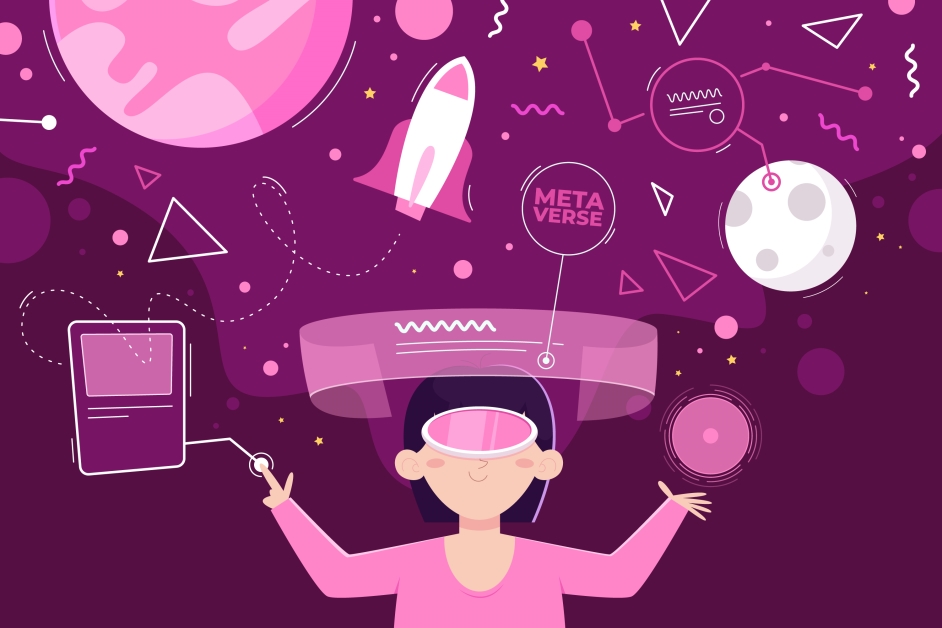What is Digitalization?
Digitalization refers to the process of converting analog data into digital form, which can then be easily stored, accessed, and manipulated by computer systems. It entails using technology to convert traditional manual and paper-based procedures into digital formats, allowing for faster and more efficient operations, improved data accuracy and accessibility, and increased productivity.
Digitalization, in a broader sense, refers to the incorporation of digital technologies into all aspects of business operations and society as a whole, such as the use of mobile devices, cloud computing, artificial intelligence, and the Internet of Things (IoT) to create new digital products, services, and business models. This transition is causing major changes in social institutions and sectors, opening up new avenues for growth and innovation while challenging conventional practices of doing things.

Facts About Women and Digitalization in Pakistan
Pakistan's Government is aimed, to bring a digital revolution to the country. This aim cannot be achieved unless half of the population consists of females, not become a part of this process of digitalization. Business, learning, research, and recreation whatever the purpose is, the use of digital technology is alarmingly low among women. Here are some facts and examples of women and digitalization in Pakistan:
1) The literacy rate of the female population is as low as 46% and of men is 71%.
2) Facebook.com sites that the audience of advertisements in Pakistan is only 19.2%, while 80.8% are men.
3) Similar data from LinkedIn shows that only 16.3% of women are the audience of LinkedIn advertisements while the remaining 83.7% are men.
4) National Center for Women & Information Technology (NCWIT) has reported that only 25% of computing occupations belong to women and 88% of information technology patents have male-only teams.
5) Another painful truth is that only 35% of the population have access to the internet and only 75% have mobile phones.
6) But when it comes to women, the situation becomes more severe because despite the fact females constitute 49% of the population only 13% of the women have access to 3G/4G internet on their mobile phones and only 28% have mobile phones.

Government"s Initiatives to Increase Women's Participation in Digitalization
The government of Pakistan has launched several initiatives to encourage women's participation in the digital sector.
She Loves Tech
"She Loves Tech" competition, is one of these initiatives which provides a platform for female entrepreneurs to showcase their innovative tech solutions.
Online Marketplaces
Many women in Pakistan are using digital platforms to launch their own businesses, such as online marketplaces for handmade goods, digital marketing agencies, and e-commerce stores.
Women's Digital League (WDL)
The Women's Digital League (WDL), founded by Nighat Dad, is a platform that provides digital skills training to women in Pakistan, enabling them to find remote work opportunities and launch their own online businesses.
Girls In ICT Day
The "Girls in ICT Day" initiative, launched by the Pakistan Telecommunication Authority (PTA), aims to encourage young women to pursue careers in the digital sector and to provide them with the necessary skills and training to succeed in this field.
Social Media Platforms
Women in Pakistan are also using social media platforms, such as Twitter and Facebook, to raise awareness about social issues and to advocate for gender equality and women's rights.
Overall, women in Pakistan are increasingly leveraging digital technologies to overcome socio-economic barriers and to participate more fully in the digital economy. However, there are still challenges to be addressed, such as limited access to digital infrastructure and resources, cultural and social norms that discourage women's participation in the workforce, and a lack of female representation in leadership roles within the tech industry.
Problems faced by females in Pakistan when it comes to digitalization
While there is progress in increasing women's participation in the digital sector in Pakistan, there are still several challenges and barriers that females face. Some of the problems faced by females in Pakistan when it comes to digitization include:
Limited Access to Digital Infrastructure:
Many women in Pakistan do not have access to basic digital infrastructure, such as computers and internet connectivity, particularly in rural areas. This limits their ability to participate in the digital economy and access digital services. For example, a 2019 report by the Pakistan Telecommunication Authority (PTA) found that only 31% of women in rural areas had access to mobile internet compared to 59% of men.
Gender-based discrimination:
Women in Pakistan face discrimination in many areas, including education, employment, and entrepreneurship. This discrimination can limit their opportunities to acquire digital skills and participate in the digital workforce. A study conducted by the World Bank found that women in Pakistan are less likely to be employed in the tech sector compared to men. Furthermore, women often receive lower pay for the same work as men.
Cultural barriers:
In many parts of Pakistan, cultural norms and social expectations limit women's mobility and ability to interact with male colleagues or clients, which can impede their ability to work in the digital sector. many women are not allowed to travel alone, which can make it difficult for them to attend meetings or conferences
Harassment And Abuse:
Women in Pakistan who work in the digital sector or use digital platforms can be vulnerable to online harassment and abuse, which can negatively affect their mental health and limit their ability to participate fully in digital spaces. Women who use social media platforms may be subjected to cyberbullying, stalking, or revenge porn.
Lack Of Role Models And Mentors:
There is a shortage of female role models and mentors in the digital sector in Pakistan, which can make it more difficult for women to envision themselves in digital careers and access the support and guidance they need to succeed. a 2019 report by the Punjab Information Technology Board found that only 20% of women in the tech industry in Lahore had a female supervisor.
Unequal Access To Education:
Many girls in Pakistan do not have access to education, particularly in STEM fields, which limits their ability to acquire the digital skills necessary to participate in the digital economy. A 2016 report by the United Nations Development Programme (UNDP) found that only 13% of women in Pakistan have a tertiary education and that girls are more likely to drop out of school than boys.
Overall, addressing these challenges will require a concerted effort by the government, civil society, and the private sector to increase access to digital infrastructure, reduce gender-based discrimination, address cultural barriers, provide support and mentorship for women in the digital sector, and promote greater gender equality and inclusivity in the digital economy.
Impact of Inclusion of Women in Digitalization
Pakistan's Government is aimed to bring a digital revolution to the country. This aim cannot be achieved unless half of the population that consists of females does not become a part of this process of digitalization. The economic growth of Pakistan is impossible without women's inclusion.
The inclusion of women and other marginalized groups in the business and tech industries gives wonderful results. It is a proven fact that when we have equal numbers of men and women in teams, such projects are more sustainable and produce positive results than any other ratio of gender diversity. We have very interesting studies in the USA that in 60% of successful tech startups women are in senior positions. So digitization only works if different population groups have equal access to technology.
Conclusion
Looking at the gender gap and global digitalization, we know that the situation in developing and developed is no more or less similar. According to Datareportal’s Digital 2020 Global Report, there are 4.54 billion internet users in the world. However, the percentage of females in the technology sector is still low. National Center for Women & Information Technology (NCWIT) has reported that only 25% of computing occupations belong to women and 88% of information technology patents have male-only teams. When it comes to Pakistan this gap becomes more obvious. Pakistan is an agricultural country, 70% of the population lives in rural communities while 90% of the ICT infrastructure is installed in urban areas. This digital divide is not only visible in urban and rural communities but also between men & women as well. Bridging the digital gap is essential for achieving true woman empowerment. Without equal access to digital tools, resources, and skills, women are left at a disadvantage in education, career opportunities, and social engagement. Closing this divide enables women to participate fully in the digital economy, access information, and advocate for their rights, fostering gender equality and driving societal progress. Reducing the digital gap isn’t just a technological necessity; it’s a cornerstone of empowering women to reach their full potential in a rapidly evolving world
